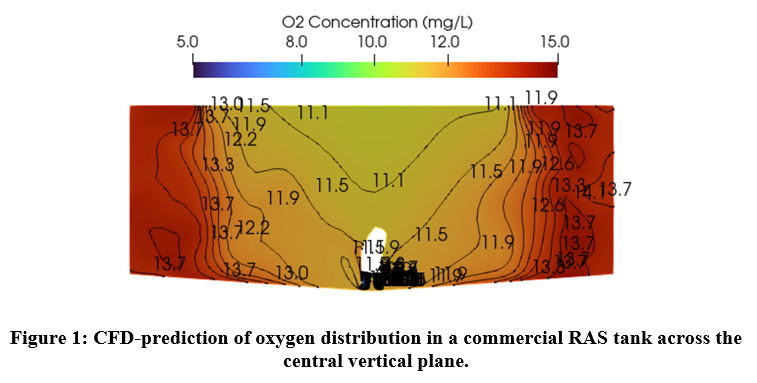ENSURING OPTIMAL WATER QUALITY IN RAS ENGINEERING USING HIGH-FIDELITY MODELING
Water quality plays a fundamental role in fish health, growth, and overall system performance in Recirculating Aquaculture Systems (RAS). Among the various water quality parameters, dissolved oxygen (DO) is one of the most critical. Fish require a stable and adequate supply of oxygen throughout the tank volume, yet maintaining this can be challenging in high-density aquaculture systems. Uneven oxygen distribution, such as too high levels around inlets, oxygen-depleted zones near the tank bottom, and the presence of biosolids can create microenvironments that stress fish, reduce feed conversion efficiency, and increase disease susceptibility.
This study highlights the role of DO distribution and water quality management in RAS. The model-visualizes and analyzes how oxygen is distributed in a commercial RAS tank under typical operating conditions, also accounting for the impact of the fish itself . The model accounts for stocking density, fish oxygen consumption and fish distribution, and shows how variations in water flow influence s the oxygen availability in different parts of the tank. Figure 1 shows the model prediction of DO distribution across the central vertical plane for a salmon stocking density of 64 kg/m3. By simulating various conditions such as biomass densities, oxygenated water inlet placements, and waste accumulation patterns, it is possible to identif y practical strategies to reduce oxygen gradients and promote more uniform conditions throughout the tank. These include optimizing the placement of oxygen delivery systems, improving tank flow design, and regularly removing biosolids to prevent stagnation.
Keywords: S ustainable aquaculture, water quality, modeling, o xygen distribution, system optimization.
